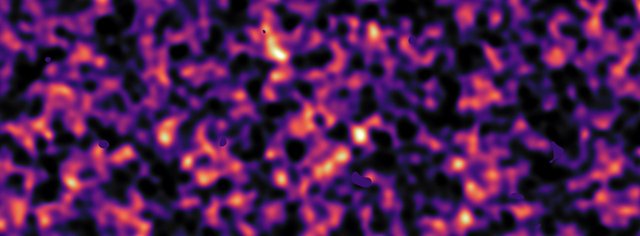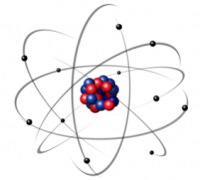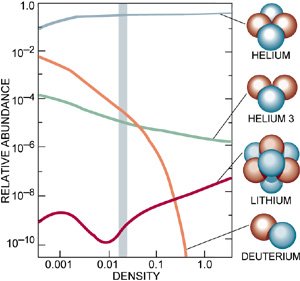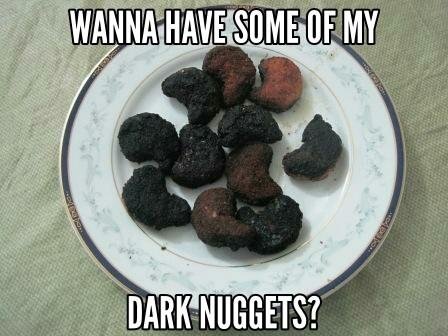When dark nuggets meet dark matter
The nature of dark matter is one of the currently puzzling issues in particle physics and cosmology, so that new ideas are proposed on a regular basis. One of the latest ones which I read about involves nuggets of dark matter.

[image credits: pixabay]
One may or may not think that dark matter exists. I have no problem with this.
I have actually always said that both hypotheses (the dark-matter one and the non-dark-matter one) are still very well alive today, when one carefully looks to data.
And data is reality. Not what I think (or what anyone thinks) that reality is. This is one of the reasons why physicists are leading researches in both directions.
The article I will talk about today lies on the dark matter side, and can be found here. The dark matter nuggets were however proposed initially in this earlier paper.
TO BE DARK MATTER OR NOT TO BE
Before tackling the main meat of the post, let me expand a little bit what I said above. If we take the standard model of cosmology, the energy pie of the universe is shared between normal matter, dark matter and dark energy.
Focusing on the matter side only, a very important fraction of matter is hence of an unknown nature. This kind of matter is named dark matter, and its properties can be summarized by two items.

[image credits: Wikipedia]
Dark matter interacts gravitationally, like normal matter. This is why there is the word ‘matter’ in ‘dark matter’.
Dark matter is not sensitive to electromagnetism, unlike normal matter. For this reason, there is the word ‘dark’ in ‘dark matter’. Electromagnetism is indeed connected to light, and dark contrasts with light.
There are today many indirect evidence for dark matter. The standard model of cosmology can explain many observations with dark matter: large-scale structure formation, galaxy rotational curves, gravitational lensing, the cosmic microwave background, and so on.
However, although many dark matter experiments have been built in order to directly detect dark matter and have been scrutinizing the sky for a very long time, not a single sign of dark matter has been recorded so far. Even particle colliders such as the LHC have not found anything.
As a result, alternatives to dark matter are worked out, involving for instance modifications of gravity. On the other hand, novel dark matter scenarios have also started to emerge. This is the topic of this post.
ATOMIC PHYSICS
Let us forget about dark matter for the moment and move back to atomic physics. The mystery behind the constituents of an atom is not a mystery anymore for a long time.

[image credits: unknown (everywhere)]
The usual picture of an atom is shown on the left. It is very standard.
We have an atomic nucleus in the center of the picture, and a bunch of electrons orbiting around it. Let us focus on the heavier stuff: the nucleus.
Unlike electrons, atomic nuclei are not elementary and are made of neutrons and protons. The number of protons is connected to the atomic species we are after, and the number of neutrons define the isotope under consideration.
An interesting point to keep in mind concerns what is going on inside the nucleus. Electromagnetism makes the protons repel each other (trying to break the nucleus apart). The strong force however comes to rescue and compensates the electromagnetic effects.
As a result, we end up with a stable nucleus. The take-home message is that only the combined effects of the two forces dictate which atomic nucleus is stable and which one is not.
BIG BANG NUCLEOSYNTHESIS - AKA A EARLY UNIVERSE STORY
In the early universe, these two phenomena (strong and electromagnetic interactions) made things more or less complicated.
The reason is that only light nuclei can be synthesized. In the early universe, protons and neutrons were lying around, and the temperature was very hot. As a results, fusion reactions were occurring all over the place.

[image credits: Martin White]
It was hence very easy for neutrons and protons to combine themselves into the lightest of all elements (hydrogen, helium, deuterium and lithium).
For larger beasts, the situation changes and we have a bottleneck.
The reason is that any nucleus with a total number of protons and neutrons equal to 5 (or 8 as well, by the way) are unstable.
Therefore, more complicated mechanisms must be involved to produce the associated heavier elements. For instance, carbon is produced from the fusion of three helium nuclei.
WHAT ABOUT THE DARK MATTER NUGGETS?
The idea of a dark matter nugget is very similar to all that I have just said.
First, we need to imagine a dark sector. This is a part of the theory where new dark particles live.

[image credits: NASA]
These new dark particles interact with each other, but not via the usual interactions of the Standard Model. We instead rely on the existence of dark forces.
After a dark sector and dark particles, dark forces are indeed the next expected step!
Now, with dark equivalents for the strong interaction and electromagnetism, we could imagine the formation of dark nuclei in the early universe. The dark counterparts of our good old atomic nuclei.
Here we are. Those dark nuclei are known as nuggets!
And with the absence of a dark equivalent of electromagnetism, there may just be no bottlenecks complicating the formation of large nuggets.
DISCUSSION AND REFERENCES
An interesting question could be the relevance of this theoretical context. Are dark nuggets crazy objects, or something that should be taken seriously? I would push for the latter, at least for now.
First, new physics theories containing a dark sector are very common in dark matter model building. There is nothing special here.
Next, it is sufficient to have one dark particle and a mediator particle connecting it to the Standard Model to already get nugget formation. This simple model by the way easily features large and small nuggets.
Now the next very important question is: are the nuggets compatible with cosmological observations? The answer is that we do not know yet: physicists are on it! We need to understand whether this nugget idea is working or not. In the meantime, it is alive and not excluded.
More information can be found below.
- This paper is where I learned about dark matter nuggets for the first time.
- This paper the one where the idea got introduced for the first time.
PS: I cannot prevent myself from thinking about a dark chicken nugget… sorry…
For more discussion on this topic (or anything related to science), please join us on #steemSTEM. The steemSTEM project is a community-supported project aiming to increase the quality and the visibility of STEM (STEM is the acronym for Science, Technology, Engineering and Mathematics) articles on Steemit.
More information on our actions are available here. You can also follow our curation trail on Streemian to support us (or by chatting with us on the chat if you do not wish to use Streemian).
I made them especially for you with my secret dark nugget recipe :P

That is totally the best comment!!! I laughed a lot :D
See? And I don't even have a bachelor's in physics :P
According to the plate, I assume you don't have a bachelor in cooking nuggets too, do you? :D
No, I do! Those are dark nuggets, they are meant to look like that...hahahaha!
I totally agree with @lemouth lol
-splendorhub
As you can see, many people are working on dark matter. There is still a lot to learn on this topic :)
This is actually a very interesting statement:
Thanks, for the very informative post about dark matter, which somehow seems to connect to spiritual theories as well...
I am not very good for the spiritual matter. This is something I usually leave to others :)
To each man his own, right :-) ? What is interesting is that a lot of things we realize in science has already been taught in Buddhism for example...
Maybe. I am however not aware of Buddhism telling anything about the microscopic world. Do you have any reference on this, by any chance?
Hey @lemouth, I wrote a small article about the topic. Feel free to look at it if your are interested. It should give you some introduction to the topic I hope.
Very interesting. Thanks for sharing. Next time dark energy fries?
We need to develop the proper oil to fry them first ;)
well lets wait what more scientists are upto... btw i found this dark theory really interesting.. and such works really makes me appreciate science...
Those further studies take time, but are interesting to follow. The entire idea is really cool and I am wondering whether it will survive data.
u r right and it may happen so!
Good content! Whale done:)
"Whale done"? lol! That's excellent! :)
I clicked for the nugget and found no nugget but learned a lot of new things, thanks for sharing this awesome post!
My pleasure! The name is real, by the way. Physics is (sometimes) funny ;)
dark nuggets? sounds like a conspiracy theory involving ray kroc !

Ahaha. Sure it is! :)
But I was more expecting the KFC guy being behind that, to be honest.
oh... i see, dark meat matter !! (hold the white)
Or dark matter meat :D
I am less understood by the science of physics,thank you for sharing the knowledge of his
You are welcome. The pleasure of writing is for me :)
I will always follow postingan2 you in steemit this